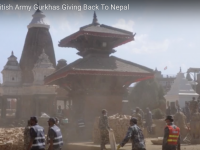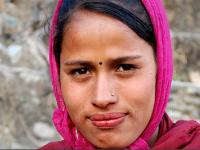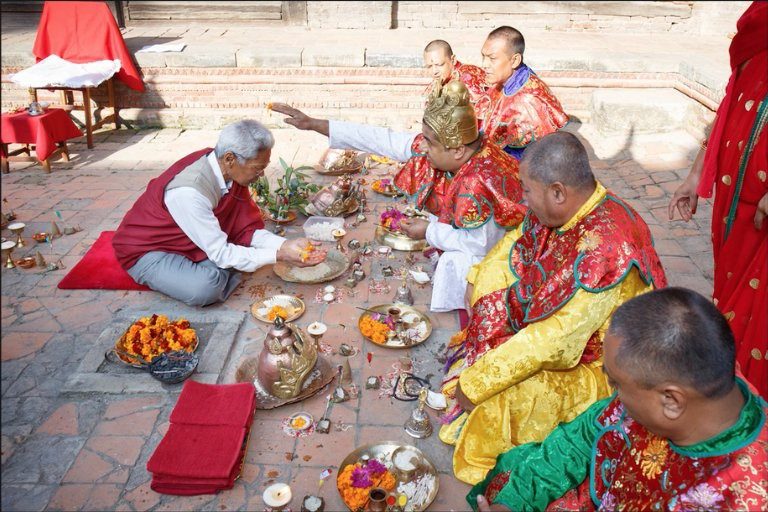Razen Manandhar
1. Background
a. Introduction
Among hundreds of communities, the Newars have unbroken history of over two millennia in Nepal. They have turned their Kathmandu Valley and some areas beyond the valley ridges into the stage of beauty and civilization that none of other communities have nurtured here. Thanks to their limitless knowledge, creativity and devotion, the valley has remained the most beautified, productive and livable in Nepal till now.
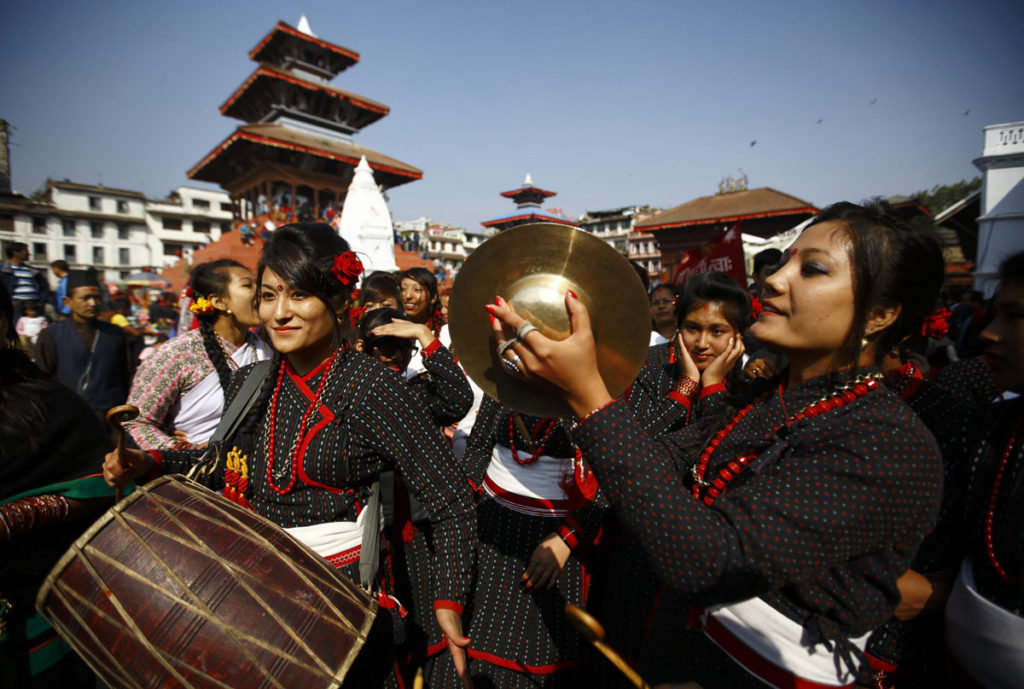
Newar is a community of diversity; one can hardly find anything common to all Newars, except the language and the culture they share. This is the reason it is known as linguistic and cultural community. In the past 2000 years, different dynasties have ruled the Newars, namely, the Gopals, the Mahishpals, the Kiratis, The Lichhivis, the Thakuris, the Mallas and the Shahas. But, none of them were truly Newars. Along with the political changes, it is obvious that those ruling classes, after their empire’s falling down, mingled into the citizen’s communities and thus, the society became more and more diverse.
Being a multi-ethnic, multi-linguistic and multi-religious country, Nepal has all the positive and negative consequences. In the past the Newars followed four major religions — Hindu, Buddhism, Islam and Christian (followers of Islam and Christianity, were exiled or oppressed by the new political regime, which invaded the valley in 1760s). Now, there are Hindu Newars and Buddhist Newars; the Hinduism and Buddhism co-exists in the valley.
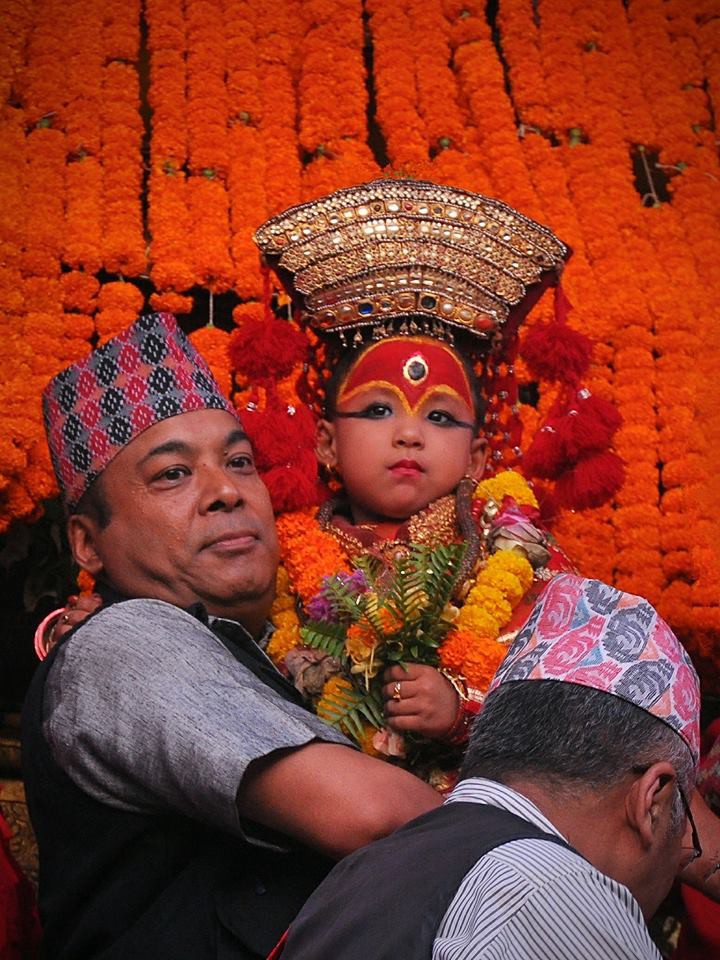
As the Newars are a mixture of Tibeto-Burman communities of the northern highland and Indo-Aryan communities of the southern plains, diversity among the Newars is also a nature of their own. It is natural that in kingdoms, majority of the people tend to follow the “royal” religion, for personal benefit, or social status. Still, the Buddhists were securing their space here from the very beginning. The rulers were always Hindus, but the Buddhist communities were successful to maintain their identity and thus did not feel any threat for survival. Now, some Newars are Hindus and some are Buddhists. Newar Buddhists invite Bajracharyas as priests while Newar Hindus invite Rajopadhyayas or Karmacharyas as their priests to guide them in rituals.
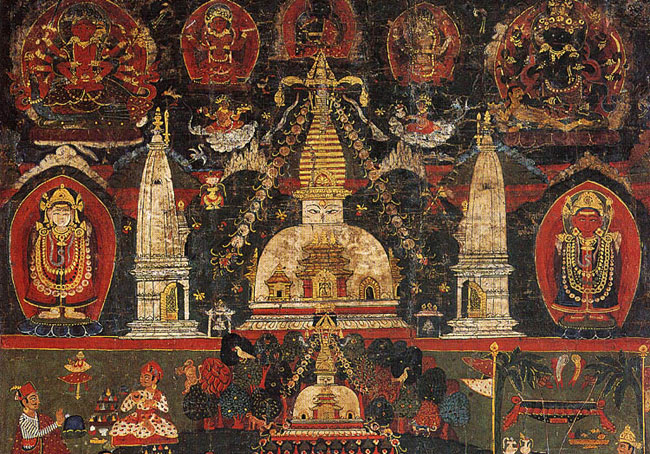
b. Buddhism in Nepal (Kathmandu Valley)
This article will concentrate only on Buddhist Newars. Influence, infiltration and harmonization of the two communities, along with the bonding of two philosophies as well, were inevitable. The influence of Hinduism (or rather Shivaism, Vaishnavism and Shaktaism, all together) rose from 11th century (in Nepal’s context) along with appraisal of tantraism among Newar Buddhists. In addition, some traces of their indigenous religion, atheistic or nature-worshipers, have to be reflected there.
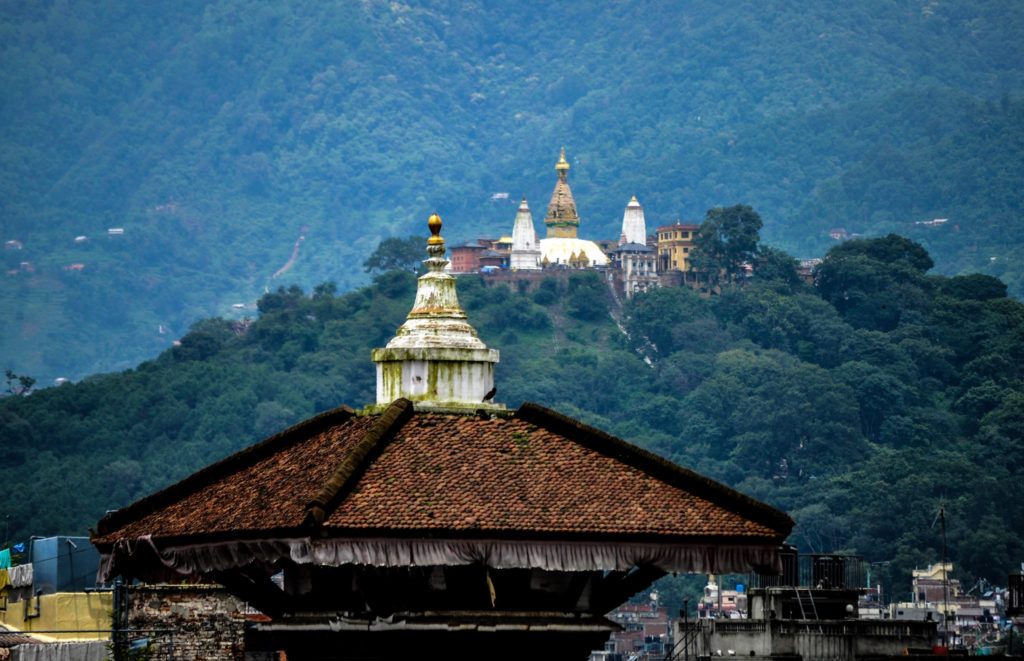
Legends have it that basin on which the Kathmandu Valley is catered was a big lake. And long before Shakyamuni Buddha, other Buddhas visited here and found this lake to be pious place for development of Buddhism. Some believe that the Buddha himself came to Kathmandu, while others say that Emperor Ashoka visited Patan (near Kathmandu) and his daughter came here to marry with a local prince. Buddhism flourished in the Lichhivi period (c.400–800 AD), when many of major Buddhist shrines were built and festival started. Evolution of many Mahayana and Vajrayana Buddhist traditions came up in this period. Nepal’s Buddhism was also taken to the Tibetan empire in this period.
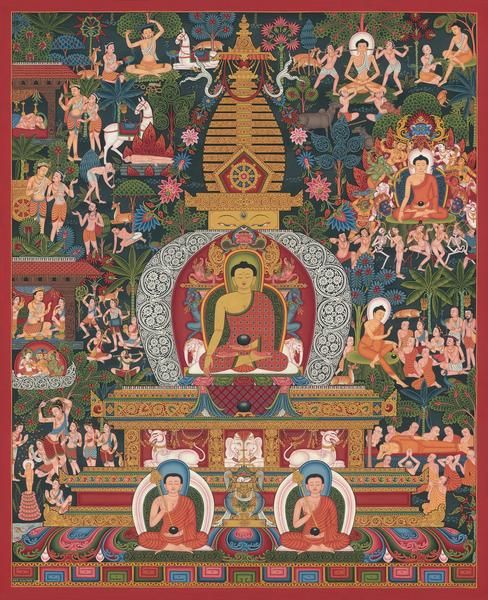
In the “dark” period after the Lichhivi dynasty, by the beginning of the 11th century, the Buddhism in Nepal developed to be a highly sophisticated conglomeration of Mahayana, Vajrayana and Tantrism. One can also say that between the 8th and 12th centuries the Vajrayana Buddhism moved from India into Tibet through the Kathmandu Valley and it left an unprecedented impact here. But when it was traced here, it was totally different; either you call it syncretism of Hinduism and Buddhism or just Hindu encroachment into Buddhist philosophy, the result is, what now people broadly term as, Newar Buddhism. Apart from this, in the past 80 years or so, Theravada Buddhism has also been revived and quite a large number of Newars follow this tradition also.
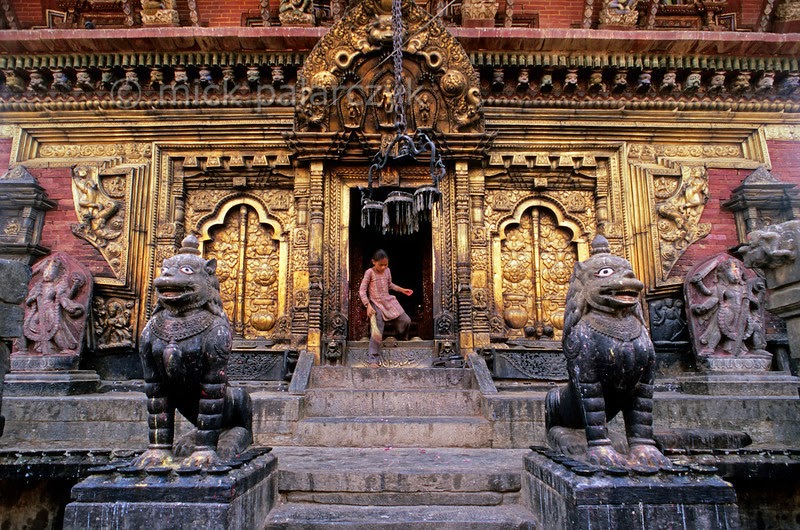
This article does not deal with philosophy of Buddhism, rather, it will only basically outline what type of Buddhism Newars of the Kathmandu Valley are following from practical perspectives.
c. Newar Buddhism
Buddha’s teaching is one and so is Buddhism. But along the time and in reference to geography, Buddhism is practiced in slightly different way from one place to another. For a long time, Kathmandu valley has been a melting-pot of Tibetan (Himalayan/Mahayani/Vajrayani) and Southern (Theravada) Buddhism, which, in the course of the history, has developed its own unique “sect” of Buddhism. This is broadly known as Newar/Newarese Buddhism, also named as the Buddhism of Nepalmandal. It is, broadly, Vajrayana with Hindu influence and is dominated by tantraism. So, shortly, it is an intricate pluralistic religious system, as it is often referred to.
2. Characteristics
Buddhism is same everywhere in the world. Despite of existence of different sects and disciplines, they all agree that the teaching of the Buddha is their principle guideline. And their major objective, of following the Buddhism, is the same. Still, the Buddhism, followed by the Newars in the Katmandu Valley and the surrounding settlements of the Newars is unique. So, it needs special attention to understand this.
a. Monasteries: This is one of the major elements of this branch of Buddhism. These monasteries are built as a courtyard surrounded by two-storied buildings consisting of halls. A major deity, mostly Shakyamuni Buddha, is installed there. They are categorized as “Bahals” and “Bahils”. There are over 400 historic monasteries of Newars in the valley. The household monks serve there and conduct rituals everyday in most of them, while, some of them are in dilapidated condition and some have even disappeared.
b. Household Monasticism: The monasteries, however, do not have any celibate monks these days. It is said that King Jayasthiti Malla (1374–1395 AD) introduced the caste system among Newars and forcefully disrobed the celibate monks. These days the boys from Bajracharya and Shakya families go through the rituals of ordination (chudakarma) and instead remain monk for only four days. After that, they all live normal lives as social beings. However, some Bajracharyas may prefer to spend life as Buddhist priests, supporting other laymen to practice rituals of Vajrayana Buddhism. They connect the rituals of Mayahana or Vajrayana with the daily-lives of Buddhists of the valley. Two of the sub-communities — Bajracharyas and Shakyas — are household monks and other Newar Buddhists take their help and guidance to practice Buddhism in day to day life.

c. Rituals: Newar Buddhism is rich in all the rituals they have developed in thousands of years. They are all unique in the sense that though all are said to be based on teachings of the Buddha, these rituals are not followed by Buddhists of other places. These were created over a period of thousands of years by continuous practice and documentation. They are the life-cycle rituals — that is, first janko (rice-feeding), ihi (rituals of girls marrying wood apples), kayta-puja (bratabandha), baraytayegu (keeping girls in secret rooms), ihipa (weddings), janko (Bhimaratharohana), and sithanyankegu (funeral) and shraddha (paying annual tributes to the dead ones) etc. They are also invited to other occasional rituals like offering Tarapuja, Satwapuja, or house-warming puja too. Similarly the priests also organize fastings of Asthami Vrata, Basundhara Brata and so on.
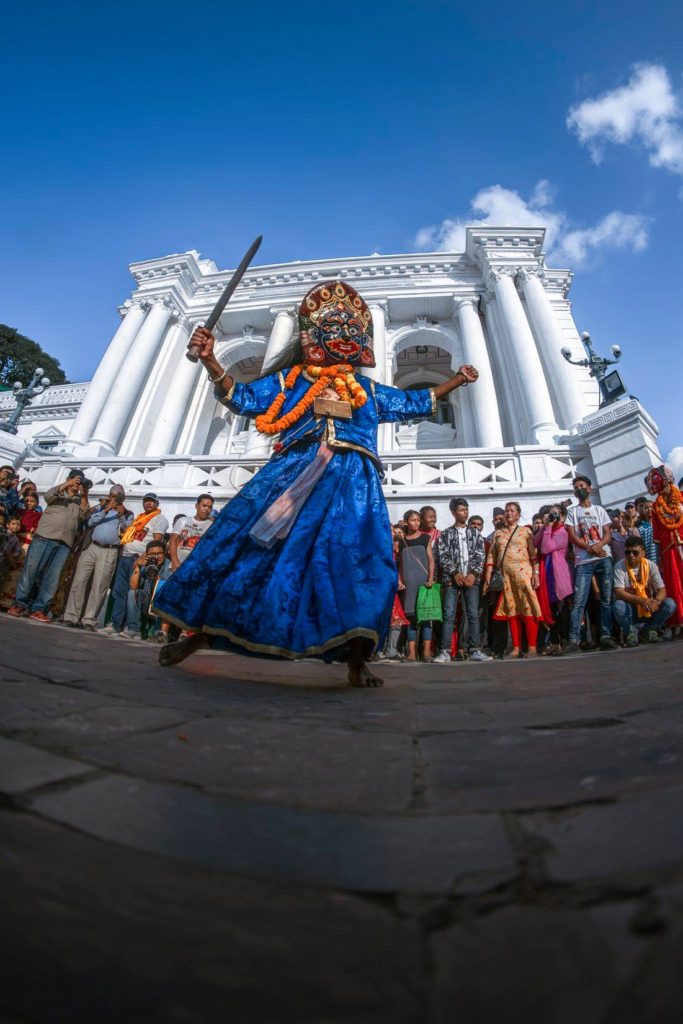
d. Patronage — Janamana: The relation between the priests and the patrons (purohit and jajamana) is the bond which keeps the age-old tradition of Newar Buddhism alive. The priests help the householders mainly to follow the traditions of Buddhism. They support others to practice the rituals of Vajrayana Buddhism as priests.
e. Festivals: Buddhist festivals are all equal for all Buddhists in the world. But, apart from them, the Newar Buddhists celebrate some particular festivals, which are uncommon to the rest of the world.
i. Gunla: Buddhists from the Newar community in Kathmandu Valley celebrate the month-long festival of Gunla. This is a special festival that falls in August-September. In this month, Buddhists visit the temple of Swayambhu and other major Buddhist shrines, playing special drums called “dhaa”. Other major festivals — Panchadan, Gumpunhee, Matayaa, etc. fall in the same month.
ii. Shree Panchami: This is another festival to worship Manjushree, the deity of wisdom.
iii. Other major festivals, like Mohani (Dashain) and Swanti (Tihar) are celebrated by Newar Buddhists differently. Actually they are different festivals, which coincidentally fall on the day when Hindus celebrate their festivals.
iv. Chariot festivals of Karunamaya: Karunamaya or Aryavalokiteshwor is considered as prime deity of Newar Buddhists. He has four manifestations in different settlements, namely, in Kathmandu, Lalitpur, Chobhar and Nala. They all have local festivals, and among them those of Lalipur and Kathmandu have separate chariot processions.
f. Art: Newars are famous around the world for their age-old passion for art. And, Newar Buddhism turned out to be a means to express their art. Their unique Buddhism and devotion to it inspired them to produce masterpieces and their skill helped them interpret their religion in artful ways. The Newars have their kind of “lost-wax” technology of casting metal sculptures and Paubha is unique Newar version of scroll painting which is very similar to Tibetan kind of “Thanka” painting. They have variety of deities to depict the complexity of their religion and their forms of art are strong enough to manifest the religion blended with skilled beauty. Similarly, the Newar Buddhists have developed a standard, mystic and meaningful form of dance “charya pyakhan”, which is performed at secret chambers to worship their special deities. Similarly, they also have special songs “charyamye” to worship, which also comes guiding the dances of charya.
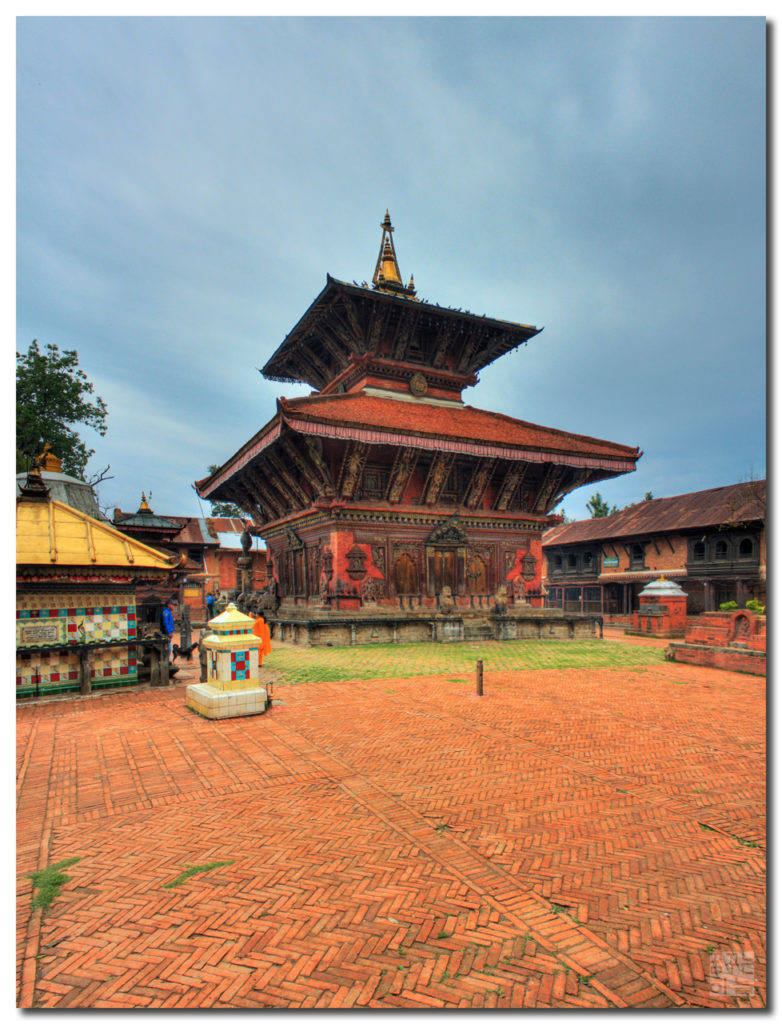
g. Literature / written documents: Newar Buddhist monks were great scholars. Thousands of books were written, copied and stored in various Buddhist monasteries. In the course of time, various beautiful Newar scripts were developed, including Ranjana, Bhujimol, Himol, Pachumol, Prachalit and so on. These books, written mostly in Sanskrit and in Nepalbhasha, are now an unfathomable treasure of knowledge for Buddhist and other scholars of the world. The state, in many instances buried, burned or threw such books, but still we have plenty of them for the future generation to educate them about Buddhism.
h. Hindu influence: One has to admit that this unique Buddhism of Newars has a heavy influence of Hinduism upon it. This is the reason that it has been strongly influenced by the Hindu caste system and it discriminates Newars on the base of the family names people carry. It may also be said that the Newar Buddhism has even accommodated some elements of Hindu Tantrism as well. It is customary for Newar Buddhists to worship Hindu gods and goddesses and celebrate Hindu festivals. Many of the rituals, prescribed by the Bajracharya priests are similar to those of Hindu ones. Some call it Hindu dominance on minority Buddhist community and others take it positively, by naming it a good example of religious co-existence of harmony.
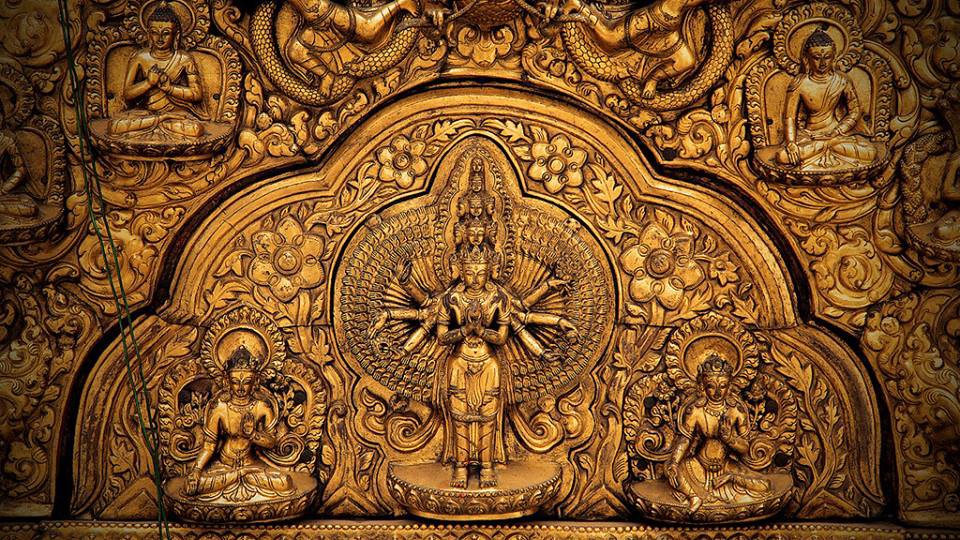
3. Conclusion
Newar Buddhism is not only Newars’ property and a Buddhist sect. But it is altogether a heritage the world can be proud of. The history, devotion, knowledge, rituals, art and so on are blessings for the future generation of the Newars. But, despite of all the noble characteristics this Newar Buddhism is now also facing number of challenges. It is virtuous that, despite of growing worldly needs, the Newar Bajracharya priests are doing this service for the ordinary Buddhists at nominal donations. When the government has little interest to promote Buddhism and propagate the Buddha’s teaching, the small community has been sincerely and selflessly working to give continuity to their heritage. It is of course a living heritage of Newars.
This article was written by Razen Manandhar, a writer, journalist, an Esperantist and a student of Buddhism. This article was first published on Medium.
Please connect with us if you are interested in submitting your article/opinions via nepalisite.com/contact or via Facebook







